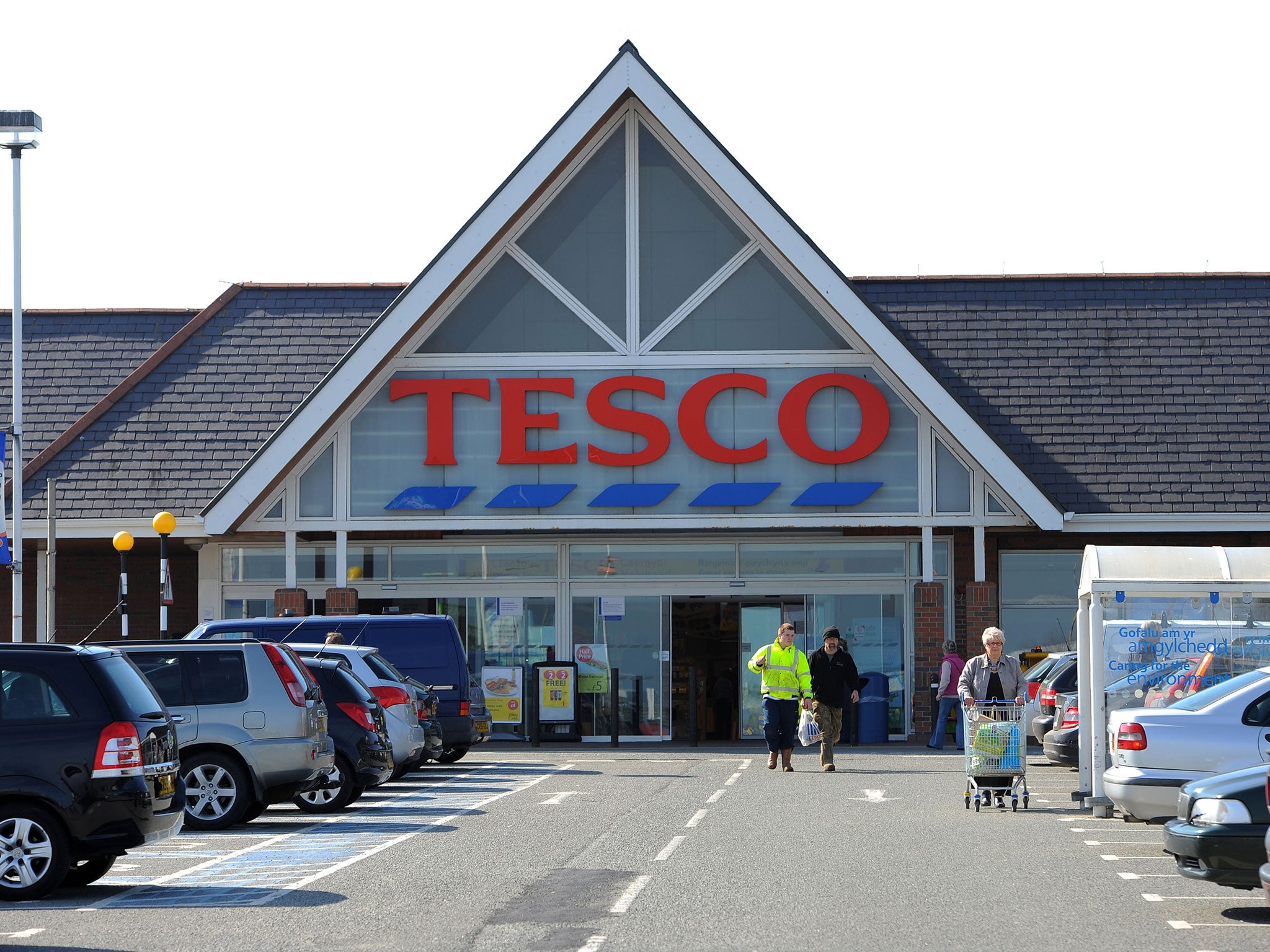War on the aisles sees first fall in food sales
Supermarkets have cut prices so hard that we’re actually spending less. But what’s good for shoppers will be bad for shareholders

Britain is in the midst of a supermarket price war that has so far taken the scalps of Tesco’s chief executive and finance director, ended Sainsbury’s unprecedented nine years of sales growth, and seen Morrisons suffer some of the biggest sales falls in living memory.
The war is so fierce, the Office for National Statistics (ONS) yesterday revealed the first fall in spending by shoppers year on year since records began 25 years ago and a low level of retail price inflation.
The average price of goods in grocers was 0.2 per cent higher than a year ago – the lowest rise since 2004 – and the average price in July was 0.9 per cent lower than 2013. On Tuesday the consumer prices index, one measure of UK inflation, fell to 1.6 per cent from 1.9 per cent a month earlier.
The British Retail Consortium (BRC) also reported recently that, on its own measures, like-for-like food sales were down 3.5 per cent – the worst performance since 2008. Meanwhile food inflation was just 0.3 per cent, also the lowest rate since records began.
Price wars are nothing new to the grocery sector and the cuts rarely affect inflation, raising the question of what is different this time round.
Many have suggested that the rise and rise of the German discounters Aldi and Lidl is the key factor – stealing customers away from the Big Four of Tesco, Sainsbury’s, Asda and Morrisons.
But could other factors be at play?
Jon Copestake, a retail analyst at the Economist Intelligence Unit, explained: “The big difference between this and previous price wars is that this one is almost exclusively being driven by mid-market retailers seeking to offset the growing prevalence of discount retailers.
“Another factor that distinguishes this price war is that is it not product specific; stores appear to be embarking on cuts across a number of lines to win back footfall, rather than develop a few loss leaders for marketing purposes.”
Previously, individual items have been slashed in price, such as bananas in 2009, and earlier this year the supermarkets embarked on a milk war with Tesco cutting the cost of four pints from £1.39 to £1, followed by reductions at Sainsbury’s, Co-op, Morrisons and Waitrose.
But now supermarkets are cutting across vast ranges. Tesco vowed to spend £200m reducing the price of cucumbers, carrots, eggs, peppers and other essentials. Asda has promised £1bn of savings over five years. And Morrisons will spend £1bn over three years, cutting prices on 1,200 lines.
Mr Copestake said: “If price wars are limited to a handful of specific loss-leader items then the effect [on inflation] is marginal, but where they take place across a range of goods then there will be a much greater impact.”
But how can supermarkets cut their prices so confidently without the risk that they may be forced to push them up in the near future – just as Tesco did in 2012 when its failed cuts were quickly unwound?
Richard Lim, head of business information for the BRC, explained: “The conditions in the commodities market seem quite benign and there doesn’t seem to be any reason to suggest that commodity prices will rise any time soon.
“The grocery sector works on wafer-thin margins, so the cost of wheat, corn, oil, rice and meat is arguably more important when it comes to setting prices than whether the discounters are winning customers.”
That is not to suggest that the discounters are not playing their part, with the Big Four all agreeing that there is a threat from other European countries, such as Germany, where discounters are the market leaders.
However, Mr Lim said: “One structural change in the market is the discounters, but it’s important to put into context that they only control about 8 per cent of the market. They are growing very quickly, but 92 per cent of grocery shopping happens outside that market.
“In a historical context, it’s also worth remembering that discounters had a bigger market share in 1995, with Kwik Save in the region of about 11 per cent.”
Indeed, before stepping down from Sainsbury’s, its former boss Justin King was quick to point out the discounters’ power was tiny by comparison.
But the current crop of supermarket bosses still appear to be taking the threat very seriously, with the key outcome being that they are taking the fight not just to the discounters but to each other, especially with early indications showing that Asda is coming out on top, in part due to its price cuts being launched before its rivals’.
Other factors are also at play, with internet and convenience store shopping across different grocers leaving fewer households doing one big weekly shop, while families are also learning to throw away less food.
So whether it is commodity prices stabilising, discounters flooding the market, or shoppers changing their habits, it seems safe to say most people will enjoy lower prices.
But the warning implicit in yesterday’s ONS figures is that there are some drawbacks to cheaper bananas, carrots and milk. The price war has led Tesco to consider a dividend cut, and with most pension funds tied up in the stock market, continuing falls in profits could ultimately hit us all.
Subscribe to Independent Premium to bookmark this article
Want to bookmark your favourite articles and stories to read or reference later? Start your Independent Premium subscription today.

Join our commenting forum
Join thought-provoking conversations, follow other Independent readers and see their replies